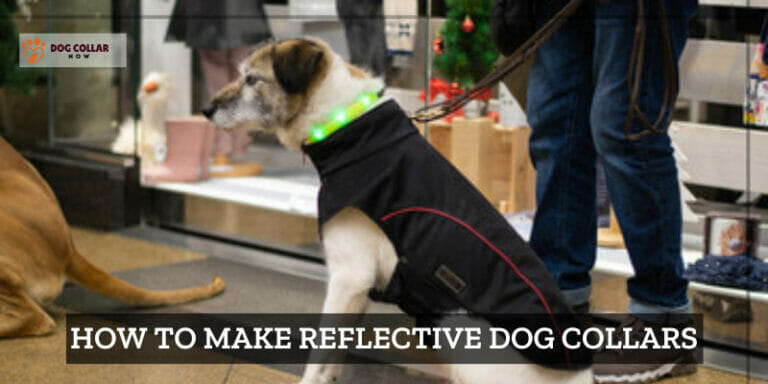Could My Dog Be Allergic To Seresto Collar – Symptoms

Hello there! Fellow dog owners, you know that your furry friend’s health and well-being are of utmost importance to you. You may have heard about Seresto collars, which are popular for their effectiveness in preventing fleas and ticks on dogs.
However, you may also be wondering that Could my dog be allergic to seresto collar. This is a common concern among pet owners, and in this conversation, we will discuss the problem and potential solutions.
Dr. Coates has directly stated that it is possible for dogs to be allergic to Seresto collars, and she advises pet owners to monitor their dogs for symptoms of an allergic reaction. If a pet owner suspects that their dog is allergic to the collar, she recommends removing the collar immediately and seeking veterinary care.
I’ll explore the possibility of whether or not your dog could be allergic to the popular Seresto collar, and what signs you should look out for.
So grab a cup of coffee and let’s dive deep into this subject!
Could My Dog Be Allergic To Seresto Collar? -Complete Guide
Yes, it is possible for a dog to be allergic to a Seresto collar. Although these collars are generally safe and effective in preventing fleas and ticks on dogs, there have been reports of dogs experiencing adverse reactions to the collars, including allergic reactions.
Just like humans, dogs can develop allergies to all sorts of things, including medications and other substances. Some common symptoms of allergies in dogs include:
- Itching and scratching
- Red, inflamed skin
- Sneezing and coughing
- Vomiting and diarrhea
If your dog is exhibiting any of these symptoms, it’s important to monitor them closely to determine the cause. If a pet owner suspects that their dog is allergic to their Seresto collar, the best course of action is to remove the collar immediately and contact a veterinarian.
The vet can provide guidance on how to manage the dog’s symptoms and may recommend alternative flea and tick prevention methods that are better suited for the dog’s specific needs. It’s important to prioritise the dog’s health and well-being and to consult with a veterinarian before using any new flea and tick prevention products on dogs.
What Are The Side Effects Of A Seresto Collar?
Seresto collars are generally considered safe and effective in preventing fleas and ticks on dogs, but like any medication or product, there are adverse events or potential side effects to be aware of. Here are the step-by-step details on the side effects of a Seresto collar:
- The most common side effects of a Seresto collar are mild and include skin irritation, redness, or itchiness around the collar area.
- In rare cases, dogs may experience more severe side effects, such as vomiting, diarrhea, lethargy, or loss of appetite.
- Allergic reactions to Seresto collars have also been reported, which can cause symptoms like excessive scratching, hair loss, or skin rashes.
If a pet owner suspects that their dog is experiencing side effects from a medication from the collar, the first step is to remove the collar immediately. The pet owner should then consult with a veterinarian for further guidance on managing the dog’s symptoms.
Depending on the severity of the side effects, the veterinarian may recommend alternative flea and tick prevention methods that are better suited for the dog’s specific needs.It ‘s important to monitor the dog’s condition closely and seek veterinary care if the side effects worsen or persist.
Is It Safe To Touch The Seresto Collar?
It is generally safe to touch a Seresto collar, as the collar is designed to release the flea and tick preventative medication slowly over time and not all at once. However, it is still important to wash your hands thoroughly after handling the collar to avoid any potential skin irritation or ingestion of the medication.
Additionally, it is important to keep the safety of the seresto collar out of reach of children and to follow the manufacturer’s instructions carefully to ensure safe and effective use.
Signs of Allergic Reactions in Dogs
If your dogs and cats is experiencing any of the following symptoms, they may be allergic to their Seresto collar:
- Redness or irritation of the skin at the site of the collar.
- Hair loss or bald spots around the site of the collar.
- Hot spots around the site of the collar.
- Scabs or crusting around the site of the collar.
- Oozing or discharge from the site of the collar.
- Excessive scratching or licking at the site of the collar.
What Does An Allergic Reaction To A Seresto Flea And Tick Collar Look Like?
An allergic reaction to a flea collar can present itself in a few different ways, but typically you’ll notice some redness, swelling, or itching in the area where the collar is located. Your pet may also scratch excessively or seem uncomfortable.
In some cases, more severe reactions can occur, such as hives or difficulty breathing, which require immediate veterinary attention. If you suspect that your pet is having an allergic reaction to their flea collar, it’s best to remove the collar and give relief to them, also contact your veterinarian for further guidance. They may recommend a different type of flea control or suggest other treatment options to help manage your pet’s symptoms.
What Kills Fleas And Ticks Immediately On Dogs?
If you’re looking for a way to kill fleas quickly on your dog, there are several options available. One of the most effective methods is to use a flea treatment medication, such as a topical solution or an oral tablet, that contains an insecticide that kills fleas on contact.
These medications can work within hours and provide long-lasting protection against fleas. You can also use a flea comb to physically remove fleas from your dog’s coat, but this method may not be as effective at eliminating all of the fleas.
Additionally, washing your dog with a flea shampoo can help to kill fleas on contact and provide temporary relief from itching and irritation. However, it’s important to talk to your veterinarian before using any flea treatment on your dog to ensure that it’s safe and effective for your pet’s specific needs.
Causes of Flea Collar Allergies in Dogs
Allergies in dogs can be caused by a variety of factors, including environmental factors like pollen and dust, food allergies, and medications.
There are a few potential causes of allergies in dogs to the Seresto collar. The main ingredient in the collar, imidacloprid, is a common insecticide that is used in many products. It’s possible that your dog could be allergic to this ingredient.
Another possibility is that the collar is not fitted correctly and is irritating your dog’s skin. Finally, the collar may be too tight and cause your dog discomfort. If you think your dog may be allergic to the Seresto collar, please consult with your veterinarian.
What can I use instead of a Seresto flea collar?
There are several alternatives to use the Seresto collar that pet owners can use for flea and tick prevention. Some options include topical treatments such as Frontline or Advantage, oral medications like Nexgard or Bravecto, or natural remedies such as essential oils or diatomaceous earth
It’s important to consult with a veterinarian to determine the best flea and tick prevention method for your dog’s specific needs and health status. The veterinarian can also provide guidance on the proper use and dosage of any flea and tick prevention products.
Conclusion
In conclusion, while allergic reactions to the Seresto collar are rare, they are possible. Look out for signs of an allergic reaction such as itching, scratching, or redness wherever the collar has been applied.
Make sure to research all flea and tick medications before administering them so you can make informed decisions regarding your pet’s safety and well-being.
If you are concerned that your dog may have an allergy or other reaction to applying the collar, it is important to see a veterinarian for an examination and diagnosis as soon as possible. With proper care and attention, you can keep your dog healthy and happy, and protect them from fleas and ticks.
FAQs
Can Seresto collars be taken on and off?
Yes, Seresto collars can be taken on and off. However, it’s important to follow the manufacturer’s instructions for the proper use and to ensure the collar remains effective in preventing fleas and ticks.
Do seresto collars make dogs itch?
Yes, Seresto collars have been reported to cause itching in some dogs as a possible side effect or an allergic reaction. If your dog is experiencing itching or other symptoms after wearing a Seresto collar, it’s important to remove the collar and seek veterinary care.
Are Seresto Collars Safe For Your Pets?
Seresto collars are safe for pets when used according to the manufacturer’s instructions. However, it’s important to monitor your pet for any signs of adverse reactions or side effects and seek veterinary care if needed.
Do you need a vet prescription for Seresto?
No, a prescription is not required to purchase a Seresto collar for your dog. Seresto collars are available for purchase over the counter at pet stores and online retailers.






